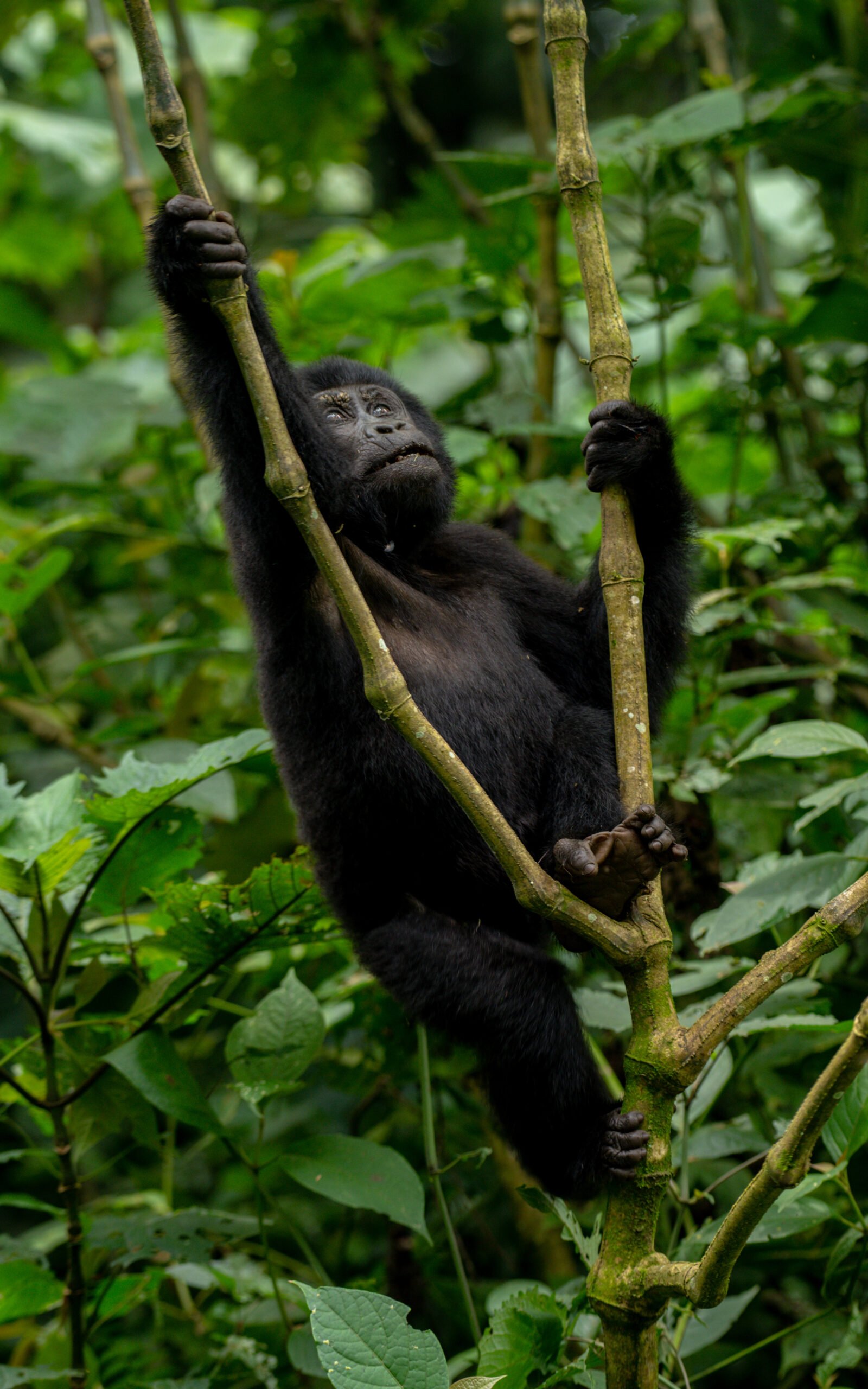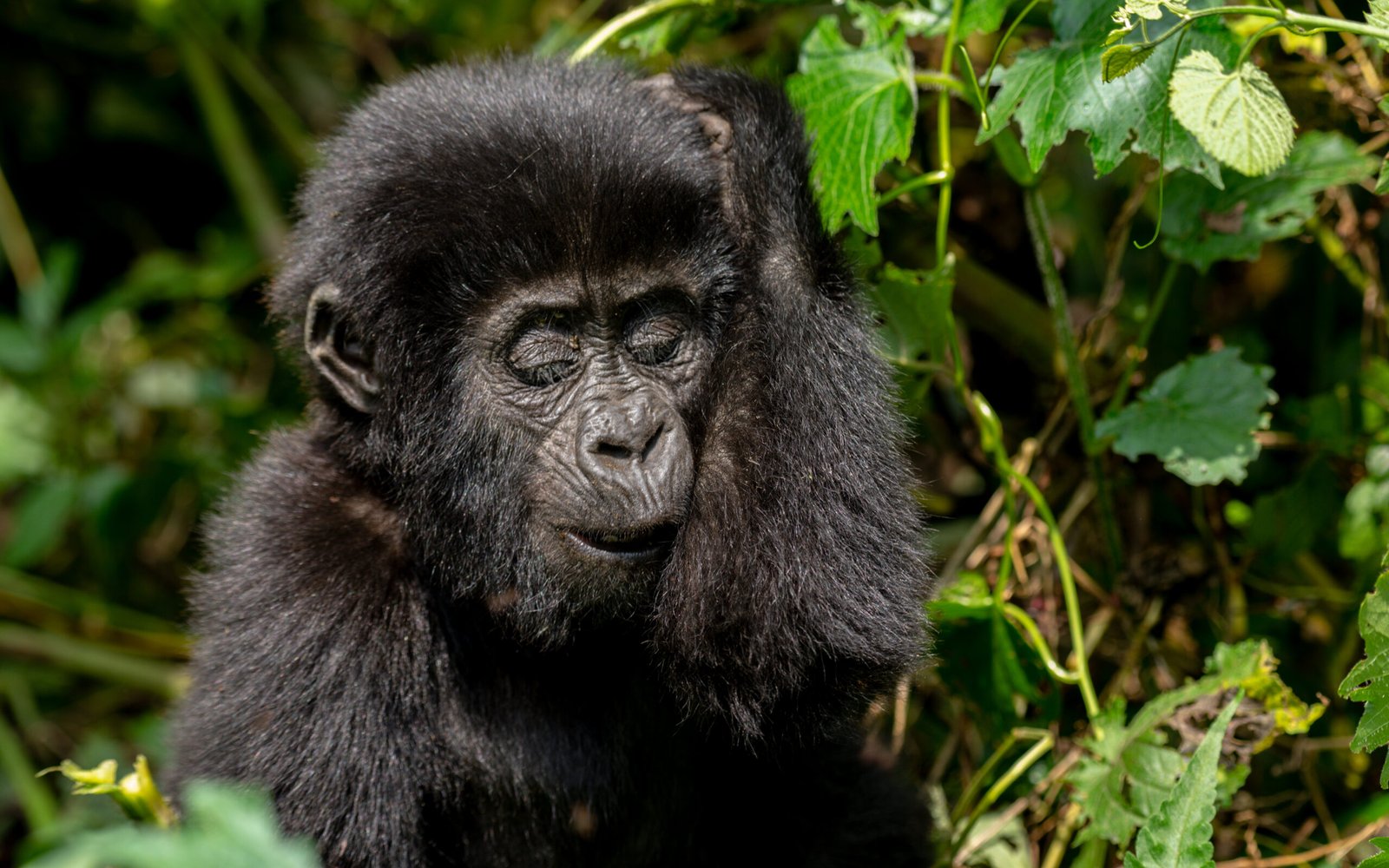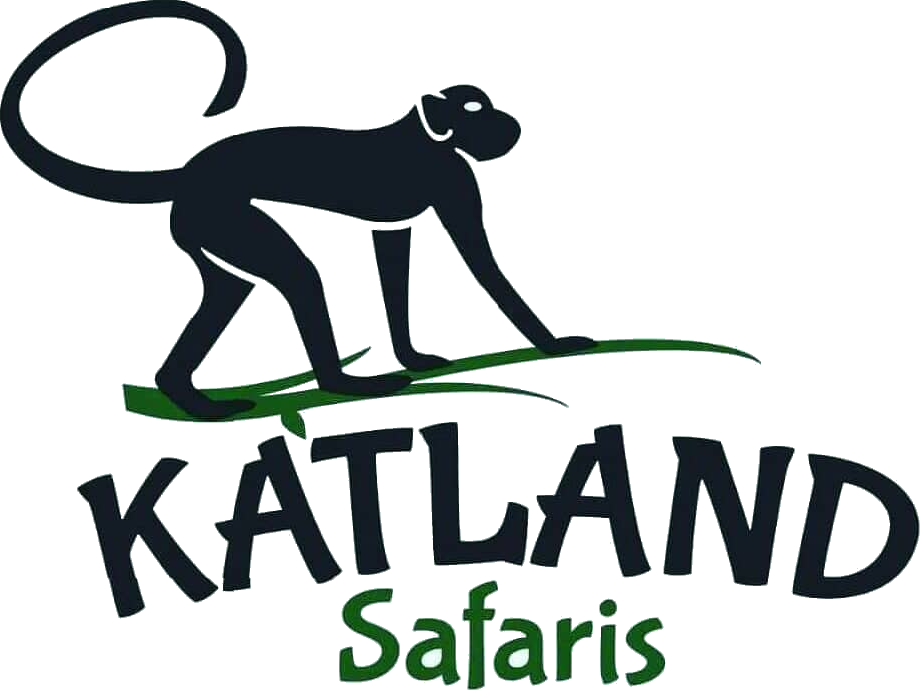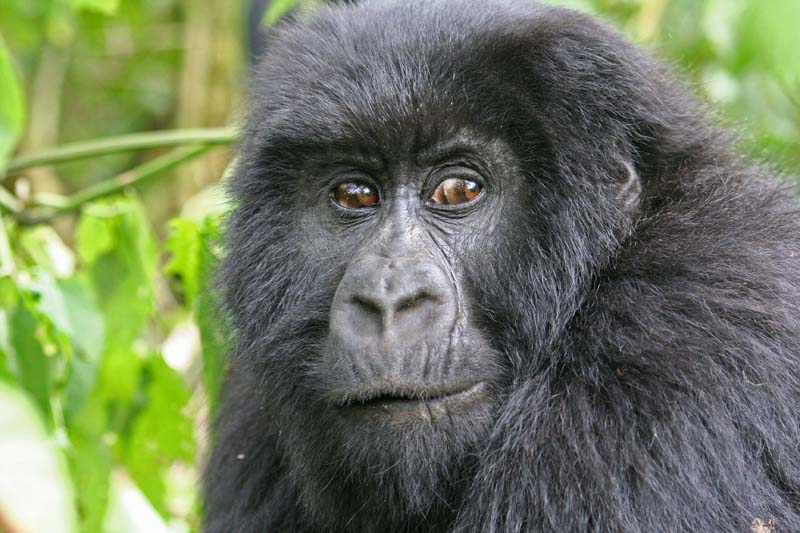What are the advantages and disadvantages of gorilla tourism in Uganda and Rwanda?
Mountain gorilla protection is the major benefit of gorilla tourism for Uganda and Rwanda. The drawback, meanwhile, is displacing the indigenous population, including Batwa pygmies. Their lifelong history is in the forest, where they fled as squatters after being expelled for conservation purposes.
Defining gorilla tourism.
Getting closer to the gorillas—the only species existing on the whole planet—is known as gorilla tourism. Gorilla trekking or gorilla habituation are two methods one might engage in gorilla tourism.
Where in Uganda should one go for gorilla trekking safaris?
Bwindi Impenetrable National Park | Gorilla tourism in Uganda and Rwanda
Almost half of the mountain gorillas in the world find refuge in Bwindi Forest, Uganda. There are two additional families open for gorilla habituation, and around 19 gorilla families open for gorilla trekking right now in the jungle.
This biosphere reserve is in Uganda’s southwest corner. The park’s vegetation coils across a deep-fissured terrain of steep, slick valleys and high draughty slopes. This produces a wide altitudinal range of 1447 meters.
Creating ecosystems ranging from lowland woodland at 1160 meters to Afromontane vegetation at 2700 meters.
Including the mountain gorillas, chimpanzees, black and white colobus, red-tailed monkeys, olive baboons, L’Hoest’s, and others, over 10 primate species enjoy the delights of this beautiful woodland.
From over 350 distinct bird species so far documented to be resident in this area, keen birders may find over 100 of them. Furthermore, included on the IUCN Red List are seven bird species found in Bwindi Impenetrable National Park.
Mungahinga Gorilla National Park | Gorilla tourism in Uganda and Rwanda
Covering around 33—7 square kilometers of territory, Mgahinga National Park is one of the few habitats known to exist for mountain gorillas. One gorilla family, the Nyakagezi family, is therefore entirely habituated and available for visitors thus far.
Its geography is occupied by three unique volcanoes: Mountain Muhavura, Mountain Sabyinyo, and Mountain Gahinga. Enjoy the amazing vistas of Mgahinga National Park by means of an 8-hour guided return walk to the summit of any of these mountains.
Other primates like black and white colobus, golden monkeys, grey-cheeked mangabey, and red-tailed monkeys call the park home.
About 115 bird species—including Albertine rift endemics—have been documented to reside in Mgahinga National Park for ornithologists.
Volcanoes National Park
The sole mountain gorilla habitat in Rwanda is found in the Northwestern region of the nation. The park now has fifteen gorilla families available for visitors.
Golden monkeys, grey-cheeked mangabey, red-tailed monkeys, olive baboons, and other species of primates call this park home as well.
Birders on the Rwanda gorilla trekking trip might seize a double chance to see several species, including Albertine rift endemics. About 300 bird species have been identified in Volcanoes National Park; among them are Shelley’s Crimsonwing, Handsome Francolin, Kivu Ground Thrush, Alpine Chat, Malachite Sunbird, Rwenzori Turaco, and others.
Every step of the climb to the Dian Fossey Grave of the courageous primatologist who stood up for the mountain gorillas toward her last breath is well worth it.

What benefits does gorilla tourism in Uganda and Rwanda Mountain Gorilla Conservation Fund?
Mountain gorilla conservation depends on financial assistance; so, part of this is gathered by engaging in gorilla tourism.
Every gorilla trekking safari or gorilla habituation experience requires a permit, which you must buy, including some of this money. Gorilla research, prescription purchases, security, compensation for the ranger guide, park upkeep, and much more are uses for this money.
Guard Mountains Gorillas Against Human Invasion
Mountain gorillas live only depending of human knowledge of the need to preserve these formerly very rare animals.
According to a census taken in the 1980s, there were maybe three hundred mountain gorillas living all around. These primates were just about on the edge of extinction. Still, the fervent protection of mountain gorillas is saving them; more than 1000 of them are found worldwide.
Tourists and their porters learn on the gorilla walk why the mountain gorillas are entitled to see another day. The mountain gorillas from the outside seem frightening, but as you go closer to them, you see how calm they are, and they do not deserve the vitriol thrown upon them.
Every day, a group of rangers rises earlier than others to track where the mountain gorillas could have stayed overnight or throughout the day. Ranger escorts guiding visitors utilize this knowledge to enable them to follow the path around the mountain gorillas.
Mountain gorillas also help other ape species dwelling in the main forest survive indirectly. Even those visiting gorilla tourist events see why the environment of these animals merits protecting.
Support Local Communities
Local initiatives include water source upkeep, health care, road repair, and other benefits from some of the money collected from gorilla tourism annually.
This means that the residents help the mountain gorillas get additional assistance by providing protection for them.
More about Mountain gorillas, research has been conducted.
Mountain gorillas have been extensively studied since the days of American primatologist Dian Fossey. Arriving in Rwanda in 1967, Dian Fossey established the Karisoke Research Center, where she conducted the first thorough studies on the lives of mountain gorillas.
Her efforts constitute the beginning of gorilla tourism; since then, further study has been done to learn more about mountain gorillas.
The world is informed about the invisible lives of mountain gorillas and other forest residents via this material. Most individuals who undertake gorilla trekking or habituation claim that standing before mountain gorillas marks a life-changing experience.
Local and worldwide, many conservation groups are working together to learn more about mountain gorillas; some of them include the Gorilla Fund, Gorilla Physicians, and others.
Possibilities of Finding Other Potentials in the Gorilla Tourism Area
Other activities available for use in either Bwindi forest, Volcanoes forest, or Mgahinga forest have been shown to the world via gorilla tourism.
Primiate stroll
One may go on a primate walk in this forest and witness black and white colobus, chimpanzees in Bwindi forest, grey-cheeked mangabey, red-tailed monkeys, and others, including golden monkeys in Mgahinga or Volcanoes National Park.
The Mountaineering Experience of the Day
Gorilla tourism made chances for a guided trek to portions of the Virunga highlands conceivable. Mount Gahinga, Mountain Sabyinyo, Mountain Muhavura, Mountain Karisimbi, and Mountain Bisoke are among the rather mountainous areas in this volcanic region.
Birdwatching in the Virunga Area
Whether you’re gorilla climbing in Uganda or Rwanda, you are very likely to see many birds, including Albertine rift endemics.
If you like gorilla trekking or habituation safari, you could have a double opportunity to see some uncommon bird species.
Among the birds in this vicinity are Handsome Francolin, Shelley’s Crimsonwing, Alpine Chat, Dusky’s Turtle, Red-faced Woodland, Rwenzori Batis Flycatcher, Collared Apalis, Banded Prinia, Mountain and Yellow Stepped Greenbuls, and others.
Local walks in the community
Local communities provide events that let visitors experience their way of life and gain knowledge about it. Sometimes, visitors also offer their time to help nearby initiatives.
Among the local community initiatives are these
In Bwindi Impenetrable National Park, the Buhoma community walk or Nkuringo Community Walk allows you to see a local household, a local beer brewery, a traditional healer, a blacksmith, and others.
After being kicked from the forest for conservation purposes in the early 1990s, the Batwa pygmies walked the Garama cave path in Mgahinga National Park. Following their raids on the Bafumbira farmers, the Batwas sought solace in this about 342-meter cave.
Right now, it offers Batwa performances a dramatic backdrop.
The drawbacks of gorilla tourism in Rwanda and Uganda open the mountain gorilla habitat for humans.
People who visit mountains and other wild animal environments step on the plants these species depend on. Mountain gorillas are totally vegetarian; hence, when you walk on vegetation, you lessen the food supply for them.
Flashlight camera usage disturbs the mountain. gorillas
Should one use flash photography for mountain gorilla pictures during gorilla trekking or habituation, these primates might get disturbed, therefore upsetting their serenity.
Natural timid creatures, mountain gorillas may be sent into hiding by looking into their eyes.
Spitting on plants might transmit infections and germs to mountain gorillas.
When you spit on the foliage or dirt while hunting for the mountain gorillas, you may carry a human illness to the mountain gorillas. The degree to which this illness penetrates the many gorilla families might lead to their great mortality. This is the reason you are not allowed to spit in the forest.
The local people living around the Gorilla habitats are evicted from their land.
The growing mountain gorilla habitats cause the locals to lose their land. Among those who have failed are the Batwa, who once relied on the forest but now lack ancestral dwellings.
To provide buffer areas for the mountain gorillas and other forest inhabitants, even the farmers who used to work the land around the National Parks have been expelled.
Land for the local population is being lost, even from the mushrooming lodging facilities around the gorilla habitats.
How To Buy Gorilla Trekking Permits
Choose a day when you want to go gorilla trekking, the nation where you want to do so, and the number of permits you desire to buy.
Our safari adviser looks at availability from the Uganda Wildlife Authority or the Rwanda Development Board list when you submit an inquiry.
Should availability exist, we urge our customers to get their permits right away, as they sell quickly. Although the gorilla licenses are just 8 per family, demand is so great globally.
The only method to prove dedication to the trekking safari is to get the gorilla permit.
We ask you to provide personal information such as your complete name as seen on the passport, nationality, date of birth, passport expiration date, and so much more.

Where can one get a Gorilla Trekking Permit?
The selling and regulating authority for Rwanda gorilla permits is the Rwanda Development Board.
The Development Board of Uganda oversees and markets gorilla permits there.
Either you might directly buy the gorilla permits from these organizations or deal with a ground-based tour operator.
At Katland Safaris, we free our customers from the responsibility of obtaining gorilla permits and planning other safari elements. Rather, we can arrange lodging, rent cars, quote safaris on behalf of our customers, and so much more as requested.
A Gorilla Trekking Safari in Uganda and Rwanda: How Much
While in Rwanda it costs $1500, in Uganda $800 per person each trip, the uniform cost of a gorilla trekking safari is the permits. This expense cuts across all budgets—luxury, mid-range, or cheap.
Additional elements comprising the overall safari cost include:
The count of visitors engaged in gorilla tourism—that is, either habituation or trekking
Booking the gorilla trek safari falls either in the low season or the peak season.
Since service providers charge daily, the days to spend on the gorilla safari are determined.
There are other pursuits to mix with gorilla trekking, like chimpanzee trekking, wildlife safaris, birdwatching, and so many more.
For additional information, get in touch; kindly examine our travel adviser.



